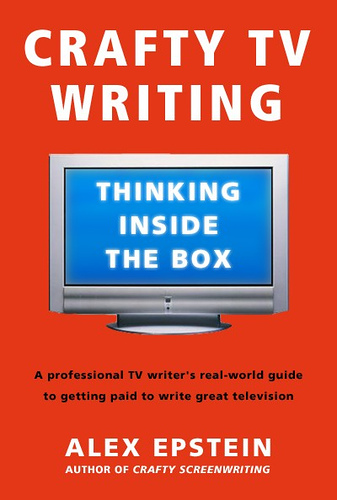
Chapter 5: Bringing The Funny
Juxtaposition
Derailing your audience’s expectations with a non sequitur isn’t funny. You have to have a comic twist. That’s the juxtaposition of two things that the audience doesn’t expect to go together, but which have a point of reference that allows the writer to make a connection between them. What makes the juxtaposition funny is that it’s not supposed to fit, but it kinda almost does.
As Kevin Bleyer (Politically Incorrect) says, “.... much of comedy is contrasting two unlikely things and extending the metaphor beyond practicality.”
You can make a one-year-old laugh by putting a measuring cup on your head for a hat. She knows a measuring cup isn’t a hat. But it sort of resembles a hat, so it’s funny. Putting pasta on your head will not get nearly the same laugh, because pasta does not resemble a hat. Though it does resemble hair. You can try this as an experiment yourself, if you forget to use contraception.
Wordplay is juxtaposition at the linguistic level. A pun is using a word’s sound to juxtapose it with something it doesn’t mean. As my grandpa Sam said after his friends locked him in a closet until he promised never to tell another pun: “but please o-pun the door.”
The best juxtapositions, like the best metaphors, mean something. The odd juxtaposition sheds light on the original content. In metaphor, the “tenor” is the content; the “vehicle” is what the content is being compared to. In the best juxtapositions, whether metaphoric or comic, the vehicle tells you something about the tenor. My grandfather’s wordplay didn’t illuminate the phrase “open the door” in any way. That’s why his friends threw him in Sheepshead Bay.
Puns are rarely funny on screen. But one gag that often works is using familiar rhetoric in the wrong situation: This gag is that the characters are talking about one thing, but the dialogue sounds like it’s coming from a different sort of scene. In Friends, “The One With the Breast Milk,” Monica has gone shopping with Ross’s new girlfriend, Julie, behind Rachel’s back. Rachel feels betrayed.
MONICA
And then, one thing led to another and, before I knew it, we were... shopping.
RACHEL
Oh! Oh my God.
MONICA
Honey, wait. We only did it once. It didn't mean anything to me.
RACHEL
Yeah, right.
MONICA
Really, Rachel, I was thinking of you the whole time. Look, I'm sorry, all right? I never meant for you to find out.
The content may be shopping, but the clichés the girls are using come from adultery. What makes the scene so telling is that for both Rachel and Monica, shopping is as passionate an activity as having sex, so Monica shopping with Julie is like cheating on Rachel with her. If it had been Joey who has spent time with Julie, Rachel would have had the same basic complaint — the same tenor — but without the comic twist — the vehicle.
Note that what makes this gag work is that the scene is fully committed to the adultery rhetoric. Courteney Cox and Jennifer Aniston play the scene all the way, Aniston behaving in every way like the betrayed lover, Cox apologizing and downplaying in just the embarrassed way a cheater might. If the scene only used one or two adultery clichés, or if Cox played the scene less guilty or Aniston less betrayed, it wouldn’t be as funny.
Another typical joke is the “Squiggy” a.k.a. the “hello joke.” It’s when the answer to a rhetorical question is provided by another character’s entrance:
LAVERNE
What kind of degenerate freak would do that?
She opens the door. Itís Squiggy.
SQUIGGY
Hell-oo!
The commitment is in the first line, where we expect that the answer is “no one.” The juxtaposition — and derailment — occurs when Squiggy shows up and we realize that yes, there actually is someone who’d do it. Ditto “the red dress” a.k.a. the flip cut a.k.a. the Gilligan cut, when a character declares he’d never do something, and then you cut to him doing it:
GILLIGAN
There’s no way I’m putting on a red dress and dancing the samba.
CUT TO:
Gilligan, in the red dress, dancing the samba.
Gilligan commits to his position, and then is derailed, in the form of a comic juxtaposition: a goofy guy in a red dress.